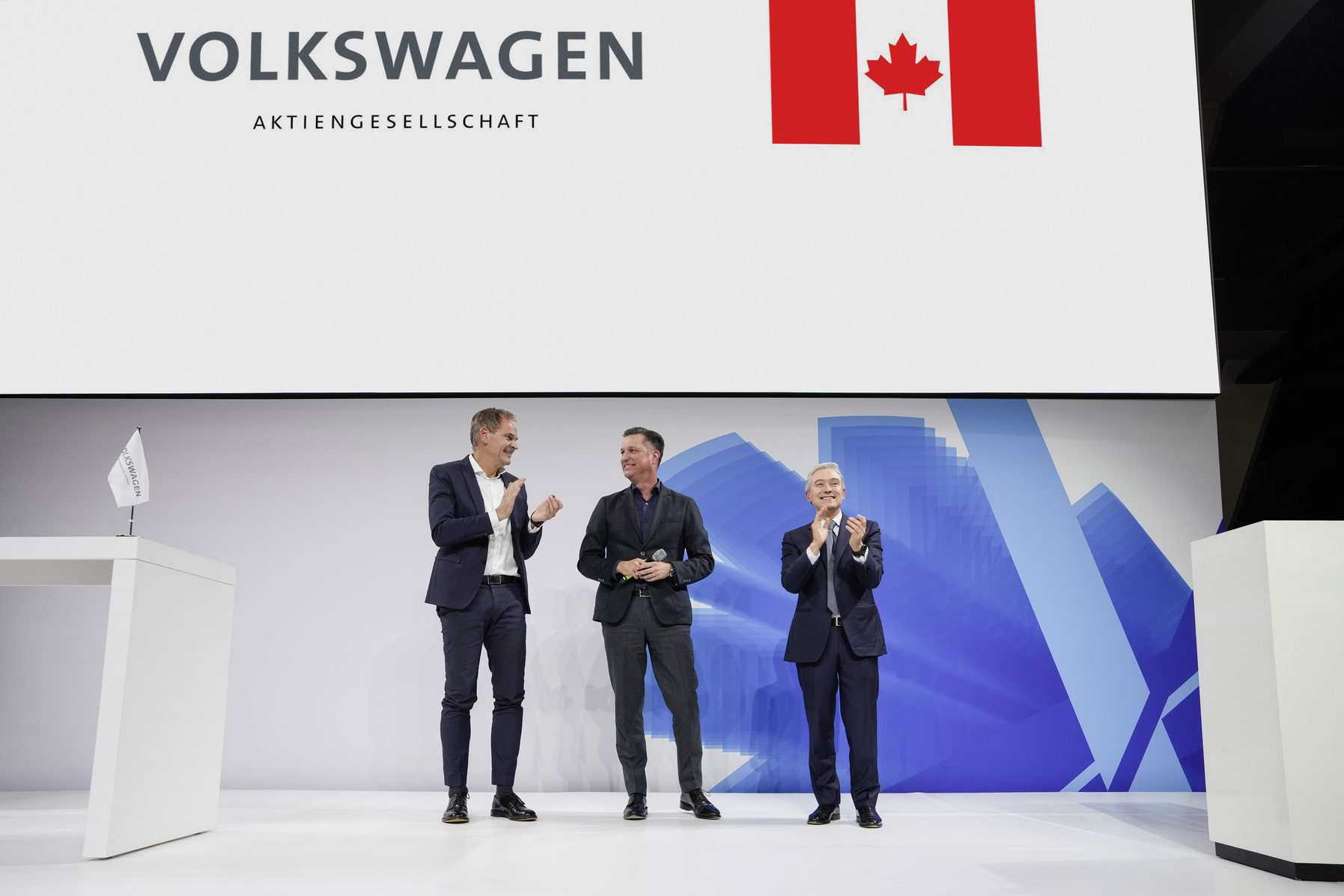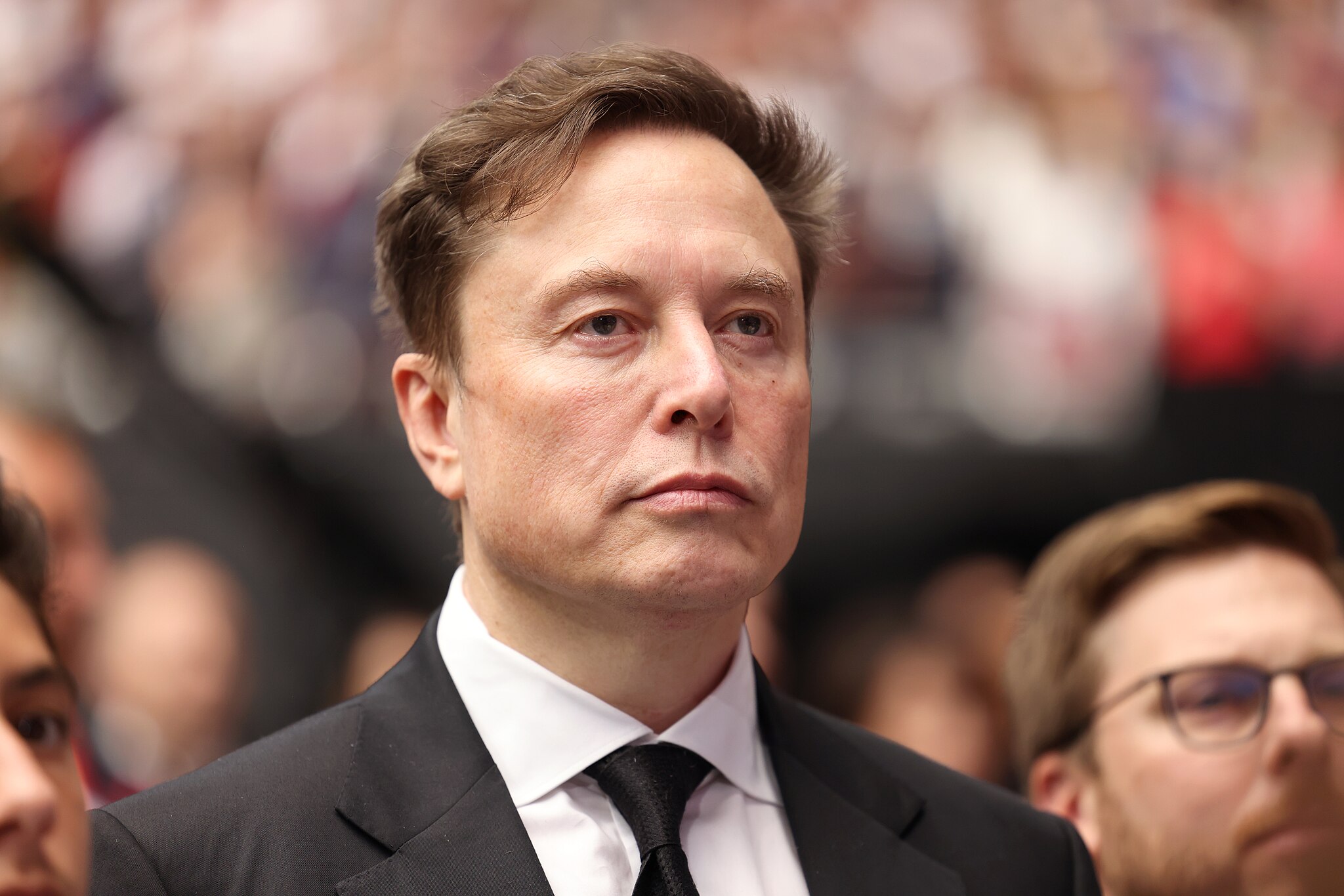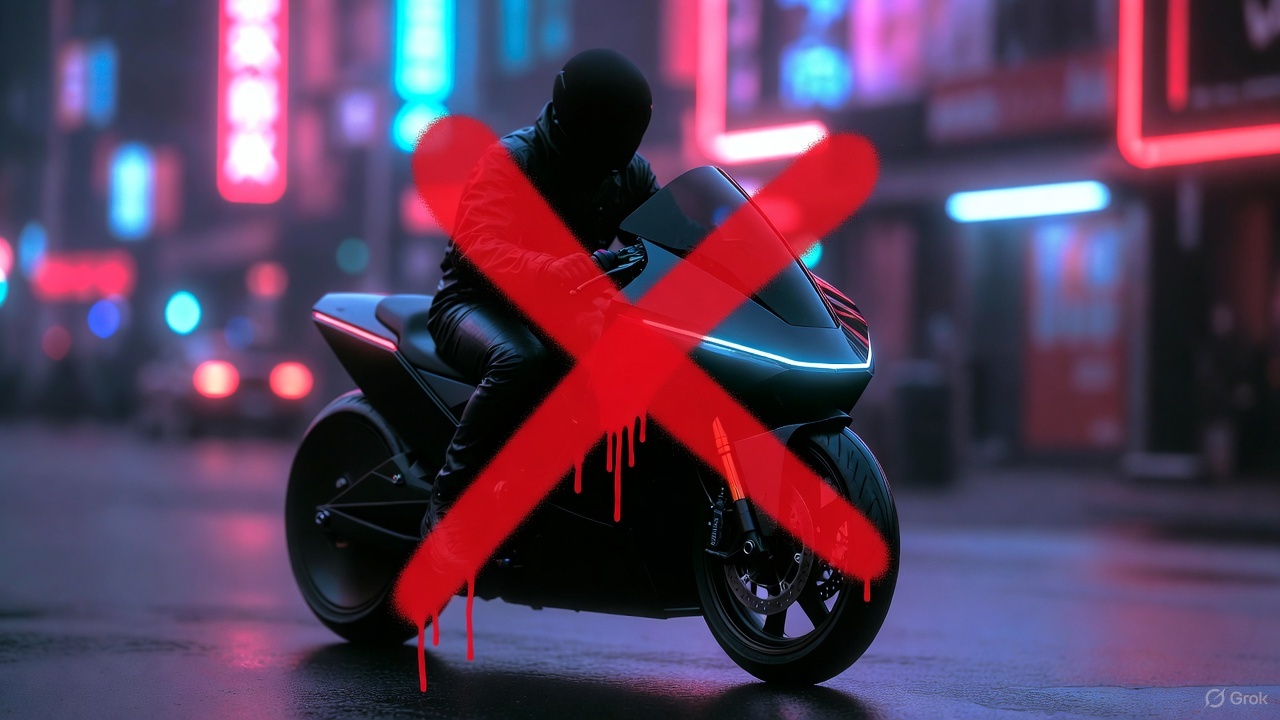

News
Volkswagen Group chooses Canada for EV battery cell manufacturing
Volkswagen Group announced today it has chosen St. Thomas, Ontario, Canada, for its first-ever North American electric vehicle battery cell manufacturing gigafactory.
Volkswagen Group, along with its battery company PowerCo, selected the region for its production of sustainable unified cells and hopes to launch production in 2027, it said today.
The decision to expand outside of Europe and into North America helps further solidify the automaker’s plans to ramp up cell production and help support the growth of the company’s EV network in North America.
“Our North American strategy is a key priority in our 10-point-plan that we’ve laid out last year,” said Oliver Blume, CEO of the VW Group. “With the decisions for cell production in Canada and a Scout site in South Carolina, we’re fast-forwarding the execution of our North American strategy.”
Why Canada?
PowerCo. chose to settle in Ontario because of its ideal conditions and VW Group’s plans to support its build-out of EVs with battery cells. PowerCo and Canadian Prime Minister Justin Trudeau agreed last year, as a Memorandum of Understanding (MOU) was crafted that focused on battery value creation and raw material security, two crucial pieces of cell manufacturing.
Canada offers a healthy supply of raw materials and wide access to clean energy, making it an ideal location for the PowerCo. factory.
North American Growth Strategy
VW Group wants to build out a full portfolio of EVs for the North American market, especially in the United States, it said. More than 25 new BEVs are set to be unveiled through 2030, and the North American market seems to be an ideal location for this growth.
“We now have the unique opportunity to grow profitably in North America and play a key role in driving the transition to electric mobility there,” COO and CFO for VW Group, Arno Antlitz, said. “Both new, major projects are integral building blocks of our ambitious growth program for the entire region. We will be able to address an even broader range of customers. Volkswagen has the right strategy, products, and scale to take a strong position in the North American market.”
Volkswagen has already ramped up the assembly of the ID.4 in Chattanooga, Tennessee, and also plans to upgrade two plants in Mexico to prime them for BEV manufacturing during the second half of the 2020s.
A Head of Steam for Scout
With Volkswagen’s plans to launch the iconic Scout brand in South Carolina, the new battery cell plans for Canada will also support this. Scout operates as an independent unit within the VW Group and will be developed on a new all-electric platform that is geared toward off-road capability.
Last week, Scout landed on South Carolina for its initial production phases, which are scheduled to begin by the end of 2026. The location was chosen due to its prowess as an automotive haven, with over 500 companies in the sector calling the state home.
Volkswagen’s Scout to build $40K electric SUV in South Carolina
Final Thoughts
The new battery cell plant is not only going to benefit the VW Group, but also the economy in Ontario, as the Honorable Vic Fedeli said, who is the region’s Minister of Economic Development, Job Creation, and Trade.
“This historic investment by Volkswagen and PowerCo SE is a massive vote of confidence in our plan to build and will strengthen our made-in-Ontario electric vehicle supply chain to create more good-paying jobs for workers in St. Thomas and across the province,” Fedeli said. “Whether it’s investing in clean steel or unlocking the economic potential of our critical minerals, our government is on a mission to create the right conditions for businesses and workers to succeed as we build the economy of the future. Thank you, Volkswagen, for choosing Ontario.“
I’d love to hear from you! If you have any comments, concerns, or questions, please email me at joey@teslarati.com. You can also reach me on Twitter @KlenderJoey, or if you have news tips, you can email us at tips@teslarati.com.

News
Tesla’s new Holiday perk is timed perfectly to make FSD a household name
Tesla AI4 owners get FSD (Supervised) through Christmas, New Year’s Eve and well into the post-holiday travel season.

Tesla quietly rolled out a free Full Self-Driving (Supervised) trial for roughly 1.5 million HW4 owners in North America who never bought the package, and the timing could very well be genius.
As it turns out, the trial doesn’t end after 30 days. Instead, it expires January 8, 2026, meaning owners get FSD (Supervised) through Christmas, New Year’s Eve and well into the post-holiday travel season. This extended window positions the feature for maximum word-of-mouth exposure.
A clever holiday gift
Tesla watcher Sawyer Merritt first spotted the detail after multiple owners shared screenshots showing the trial expiring on January 8. He confirmed with affected users that none had active FSD subscriptions before the rollout. He also observed that Tesla never called the promotion a “30-day trial,” as the in-car message simply reads “You’re Getting FSD (Supervised) For the Holidays,” which technically runs until after the new year.
The roughly 40-day period covers peak family travel and gatherings, giving owners ample opportunity to showcase the latest FSD V14’s capabilities on highway trips, crowded parking lots and neighborhood drives. With relatives riding along, hands-off highway driving and automatic lane changes could become instant conversation starters.
Rave reviews for FSD V14 highlight demo potential
FSD has been receiving positive reviews from users as of late. Following the release of FSD v14.2.1, numerous owners praised the update for its smoothness and reliability. Tesla owner @LactoseLunatic called it a “huge leap forward from version 14.1.4,” praising extreme smoothness, snappy lane changes and assertive yet safe behavior that allows relaxed monitoring.
Another Tesla owner, @DevinOlsenn, drove 600 km without disengagements, noting his wife now defaults to FSD for daily use due to its refined feel. Sawyer Merritt also tested FSD V14.2.1 in snow on unplowed New Hampshire roads, and the system stayed extra cautious without hesitation. Longtime FSD tester Chuck Cook highlighted improved sign recognition in school zones, showing better dynamic awareness. These reports of fewer interventions and a more “sentient” drive could turn family passengers into advocates, fueling subscriptions come January.
Elon Musk
Elon Musk predicts AI and robotics could make work “optional” within 20 years
Speaking on entrepreneur Nikhil Kamath’s podcast, Musk predicted that machines will soon handle most forms of labor, leaving humans to work only if they choose to.

Elon Musk stated that rapid advances in artificial intelligence and robotics could make traditional work unnecessary within two decades.
Speaking on entrepreneur Nikhil Kamath’s podcast, Musk predicted that machines will soon handle most forms of labor, leaving humans to work only if they choose to.
Work as a “hobby”
During the discussion, Musk said the accelerating capability of AI systems and general-purpose robots will eventually cover all essential tasks, making human labor a choice rather than an economic requirement. “In less than 20 years, working will be optional. Working at all will be optional. Like a hobby,” Musk said.
When Kamath asked whether this future is driven by massive productivity growth, Musk agreed, noting that people will still be free to work if they enjoy the routine or the challenge. He compared future employment to home gardening, as it is something people can still do for personal satisfaction even if buying food from a store is far easier.
“Optional” work in the future
Elon Musk acknowledged the boldness of his claim and joked that people might look back in 20 years and say he was wrong. That being said, the CEO noted that such a scenario could even happen sooner than his prediction, at least if one were to consider the pace of the advancements in AI and robotics.
“Obviously people can play this back in 20 years and say, ‘Look, Elon made this ridiculous prediction and it’s not true,’ but I think it will turn out to be true, that in less than 20 years, maybe even as little as ten or 15 years, the advancements in AI and robotics will bring us to the point where working is optional,” Musk said.
Elon Musk’s comments echo his previous sentiments at Tesla’s 2025 Annual Shareholder Meeting, where he noted that Optimus could ultimately eliminate poverty. He also noted that robots like Optimus could eventually provide people worldwide with the best medical care.
Elon Musk
Elon Musk reiterates why Tesla will never make an electric motorcycle
Tesla CEO Elon Musk preemptively shut down speculations about a Tesla road bike once more.

Tesla CEO Elon Musk preemptively shut down speculations about a Tesla road bike once more, highlighting that the electric vehicle maker has no plans to enter the electric motorcycle market.
Musk posted his clarification in a post on X.
Musk’s reply to a fun AI video
X user @Moandbhr posted an AI video featuring the Tesla CEO on the social media platform, captioning it with “Mr. Elon Musk Just Revealed the Game-Changing Tesla Motorcycle.” The short clip depicted Musk approaching a sleek, single-wheeled vehicle, stepping onto it, and gliding off into the distance amid cheers. The fun video received a lot of traction on X, gaining 3.1 million views as of writing.
Musk replied to the post, stating that a Tesla motorcycle is not going to happen. “Never happening, as we can’t make motorcycles safe. For Community Notes, my near death experience was on a road bike. Dirt bikes are safe if you ride carefully, as you can’t be smashed by a truck,” Musk wrote in his reply.
Musk’s Past Comments on Two-Wheelers
Musk also detailed his reservations about motorcycles in a December 2019 X post while responding to questions about Tesla’s potential ATV. At the time, he responded positively to an electric ATV, though he also opposed the idea of a Tesla road-going motorcycle. Musk did state that electric dirt bikes might be cool, since they do not operate in areas where large vehicles like Class 8 trucks are present.
“Electric dirt bikes would be cool too. We won’t do road bikes, as too dangerous. I was hit by a truck & almost died on one when I was 17,” Musk wrote in his post.
Considering Musk’s comments about dirt bikes, however, perhaps Tesla would eventually offer a road bike as a recreational vehicle. Such a two-wheeler would be a good fit for the Cybertruck, as well as future products like the Robovan, which could be converted into an RV.









